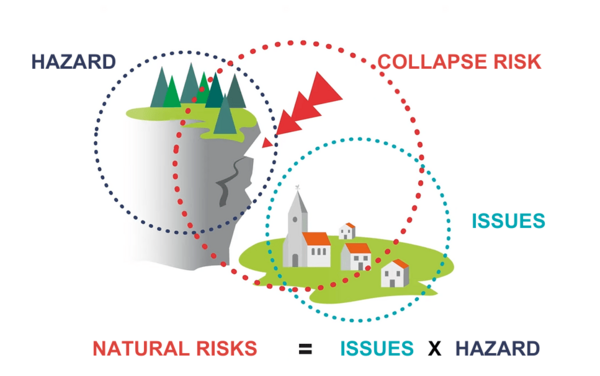
From a systemic understanding to strategies developed within the Alpine region
Recent years have shown that the simultaneous occurrence of extreme weather events, such as storms and heavy precipitation or heat waves and drought, can lead to complex, cascading hazards, the impacts of which may exceed current risk management capacities. There is scientific evidence that the frequency and intensity of these phenomena (known as X-Risk-CC events) and their impacts on socio-economic and natural systems have already increased as a result of climate change and will increase further in the future.
The overall objective of X-RISK-CC is to increase awareness, adaptive capacity and resilience to climate change related extreme events across the Alpine Space. It will develop data, methods and tools for a systemic understanding of X-RISK-CC events in order to help policy and decision makers and risk managers to improve current practices and adaptation strategies.
The project is organised in three phases:
- Learning: to identify the main stressors, gaps and adaptation potential in current risk management practice for representative X-Risk-CC hotspots in six Alpine Space countries;
- Scenario: the objective is to generate a systemic understanding based on scientific knowledge of current and future X-Risk-CC impacts and their optimised management;
- Solutions: This phase of the project consists of developing and communicating national and cross-country strategies to address current and future transnational X-Risk-CC.

Bringing together available expertise and experience
X-RISK-CC events know no borders and their impacts can act at very different spatial and temporal scales. Especially in the context of climate change, there is a need for cross-border collaboration bringing together expertise from several disciplines, with regional experiences to enable a comprehensive and harmonised understanding of how to manage and adapt to the complex impacts of X-RISK-CC in the Alpine Space.
The transdisciplinary partnership will examine numerous recent events, their multiple impacts and management, from large transboundary storms (Vaia, IT-AT; Eleanor, FR-CH) to new flood zones due to unexpected sediment inputs (Wipptal, IT), heat waves combined with drought and subsequent flooding (Gorenjska, SI) or the interactions between driftwood and mass movements (Garmisch, DE) Objective: to create a systemic perspective on X-RISK-CC events and their optimal solutions.
The impact of Eleanor storm on the french region
Auvergne-Rhône-Alpes Energie Environnement, with the support of Pôle alpin des risques naturels (PARN), chose to join its expertise with WSL (the Swiss federal Institute for Forest, Snow and Landscape research) to study storm Eleanor from 2018. Combined with other meteorological events that preceded or followed it, this storm had a sudden and violent impact on the Nothern Alps (particularly in Savoie, Haute-Savoie and Isère).
Consequences of this event are clear in the french region. PARN's work showed that 200 municipalities were affected among Haute-Savoie, Savoie and Isère departments, turning january into an unprecedented month of permanent crisis management for most of the Alps. Chalets were swept away in landslides, and some roads were closed to traffic for a onth.
In the end, more than 400 hazards were recorded on the Auvergne-Rhône-Alpes region in January 2018. These events required nearly 600 fire brigades interventions in Savoie and Haute-Savoie.
These consequences have a significant economic cost. The department of Haute-Savoie estimated the cost of these interventions up to €4,350,000, for instance.
Natural hazard are a combination of concerns/issues (such as population, building, transport and telecomunication networks, industrial and commercial activities, cultural heritage, etc.) and hazards (such as rain, snow, hail, storms, hurricanes, extreme temperatures, etc.) which have an impact on territories and involve a shift towards an integrated management system.
(Adapted from Gerard, Simon & Einhorn, Benjamin. (2019). Changement climatique et risques naturels dans les Alpes : Événements remarquables 2018.)

Source: Pôle Alpin des Risques Naturels (https://www.youtube.com/watch?v=mVPHKt-QMaA)
Partners
European Academy of Bozen-Bolzano – EURAC Research (Lead partner)
Civil Protection Agency, Autonomous Province of Bolzano
Autonomous Province of Trento
Slovenian Environment Agency
Development agency Sora
Auvergne Rhône-Alpes Energy Environment Agency
GeoSphere Austria
Forest-technical service for torrent and avalanche control, Section Tyrol
Technical University of Munich
Swiss Federal Institute for Forest, Snow and Landscape Research WSL
Environment Agency Austria
[Updated : September 2023]


Imprimer